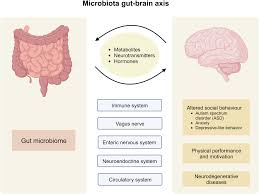Your mental and physical health are like two sides of the same coin. When one thrives, the other often follows. Let’s dive into science-backed tips to help you align these crucial aspects of well-being.
Why Mental and Physical Health Are Interconnected
The Mind-Body Connection
Ever felt butterflies before a big event? That’s your mind affecting your body. Similarly, a healthy body can boost mental clarity and resilience.
The Vicious Cycle of Neglect
Ignoring either aspect can lead to a downward spiral. Stress can cause physical ailments, and chronic illness can take a toll on your mental state.
Steps to Align Your Mental and Physical Health
1. Prioritize Sleep for Optimal Recovery
The Role of Sleep in Health
Sleep isn’t just downtime; it’s when your body repairs and your mind processes information. Poor sleep can trigger anxiety, depression, and even weight gain.
Tips for Better Sleep
- Stick to a consistent sleep schedule.
- Create a bedtime routine with calming activities like reading.
- Avoid screens at least an hour before bed.
2. Stay Active: Move Your Body, Clear Your Mind
Exercise and Mental Health
Exercise releases endorphins, your body’s natural mood lifters. It’s also linked to reduced symptoms of depression and anxiety.
Ways to Incorporate Movement
- Go for daily walks in nature.
- Try yoga for a blend of physical and mental relaxation.
- Explore activities like dancing or swimming to keep things fun.
3. Nourish Your Body and Brain with Proper Nutrition
The Gut-Brain Axis
Your gut is often called your “second brain.” An unhealthy diet can lead to mood swings, fatigue, and even mental fog.
Foods to Boost Health
- Eat more omega-3-rich foods like salmon and walnuts.
- Load up on fruits, vegetables, and whole grains.
- Limit processed foods and sugars that can cause energy crashes.
4. Practice Mindfulness to Reduce Stress
What Is Mindfulness?
Mindfulness is the act of being present in the moment without judgment. It can calm your mind and lower cortisol levels.
How to Get Started
- Dedicate 5 minutes daily to deep breathing.
- Use apps like Headspace or Calm for guided meditation.
- Practice gratitude journaling to focus on the positives.
5. Build a Support System
The Role of Social Connections
Humans are social creatures. Strong relationships can provide emotional support, reduce stress, and improve overall happiness.
Ways to Strengthen Bonds
- Reach out to friends regularly.
- Join community groups or clubs that interest you.
- Don’t hesitate to seek therapy if needed.
Breaking Down the Science
How Stress Affects Your Body
Chronic stress triggers the release of cortisol, leading to issues like weight gain, heart problems, and weakened immunity.
The Power of Dopamine and Serotonin
These “happy chemicals” are essential for mental well-being and are boosted by physical activity and balanced nutrition.
Maintaining Long-Term Balance
Create Realistic Goals
Don’t aim for perfection. Focus on small, sustainable changes over time.
Track Your Progress
Use apps or journals to monitor improvements in mood, energy levels, and physical health.
Celebrate Milestones
Reward yourself for sticking to healthy habits. It could be a new book, a day off, or a treat that aligns with your goals.
Addressing Common Misconceptions
You Don’t Need a Gym Membership
Fitness can happen anywhere, from home workouts to outdoor runs.
Healthy Eating Isn’t Expensive
Simple, whole foods like beans, rice, and frozen vegetables are both nutritious and budget-friendly.
Mental Health Practices Aren’t Time-Consuming
Even a few minutes of mindfulness or journaling can make a big difference.
Your Action Plan for Alignment
- Start with one habit, like adding 10 minutes of exercise to your day.
- Gradually incorporate mindfulness practices.
- Regularly assess how you feel mentally and physically.
Conclusion
Aligning your mental and physical health is a journey, not a sprint. By taking small, consistent steps, you’ll notice improvements in your mood, energy, and overall well-being. Start today; your future self will thank you.
FAQs
1. How quickly can I see results from these changes?
It depends on the individual, but many people notice mood and energy improvements within a few weeks.
2. Can I focus on just one aspect at a time?
Yes, but for the best results, aim to balance both mental and physical health simultaneously.
3. Are these tips suitable for all age groups?
Absolutely. These principles apply across all ages, though intensity and methods may vary.
4. What if I fail to stick to my goals?
Don’t be hard on yourself. Adjust your goals and keep moving forward.
5. How do I stay motivated long-term?
Find your “why” and surround yourself with supportive people. Celebrate your progress, no matter how small.